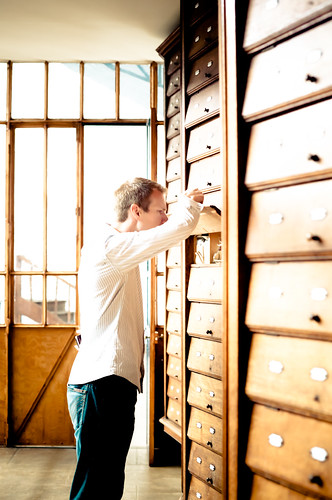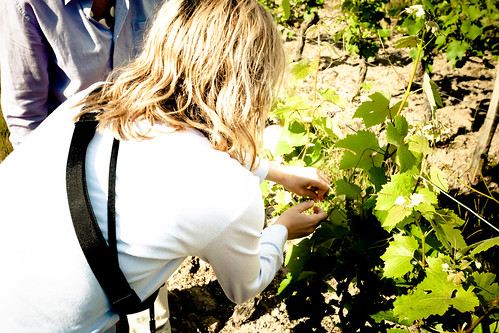Cultivation, Caves and Castles: The Wines of Saumur (Loire Valley); Part I
September 22, 2010
Even on a small brochure map, the Loire Valley seems a bit wide-flung, but David and I are well-seasoned road travelers who tend to wipe through a lot of miles in an hour or day. So when we planned out our trip to the Loire Valley this summer, we assumed we’d hit the highlights: salty Muscadet on the coast (maybe some bruised-looking sea clouds for good measure); a dabble of honeyed Vouvray; a dalliance with the sere perfection of Sancerre on the eastern end. As it turned out, we never got more than 20 miles away from our inn near Saumur during our whole wine trip.
The Loire, like other amazing parts of France, is dense. Those who have traveled Western Europe are probably familiar with the deal: each rural curve of one-lane road delivers another 11th-century monastery, another swath of family-owned vineyards, another chapel or very cute farm dog or teensy village. Add to this mix plentiful places to stop and taste the local ferment, and going is slow indeed.
We based our expedition at La Grande Maison d’Arthenay, a walled manor house with sundry, intriguing outbuildings, including a pigeon tower (round, common in the area). Proprietors Sue and Micaela know a boatload about wine (Sue has a degree in the stuff) and were able to answer (and, bless them, tolerate) our endless stream of specific questions. What type of trellising? When do they prune? What are their yields per acre—excuse, me, hectare?
In the locals, there is an enduring sense of pride and consistency in the viticulture and vinification. Tradition and care are hallmarks. As such, there is a lighthearted disdain of New World experimentation and frequent chuckling scoffs at how youthful the wine industry is in North America. This was most clearly evident to me in an interaction I had at Chateau Chaintres, a quaint, enclosed kilometer of vines replete with steep-roofed mansion.
We were being led through a tasting session by an 18-year-old named Hugo who was adorable, friendly, and spoke the clearest French I have ever heard. In retrospect this was probably for my benefit and he was probably dumbing it down to a significant degree, but it was a nice notch to cut in my self-esteem belt that I could understand most of what he said.
At some point during the Saumur-Champigny or the Crémant de Loire an older gentleman walked in. He was dressed in that way of the very affluent: a fleece pullover, clogs, but with glasses in very expensive frames. The conversation switched to English. He had, he said, spent many years in America. He had seen the blossoming wine industry in California. He raised his eyebrows and allowed a few platitudes about quality and selection, but, he frowned a bit, in America, there just “aren’t roots“. Here in France, he explained, winemaking went back centuries, it used slow-evolved techniques passed down through generations. He spoke of wine in France almost as something that had always just been. On the other hand, American winemakers were well-meaning, but upstarts, toiling on virgin land that didn’t have any depth of experience. Focus was on faddish tastes and financial growth, big tasting facilities and exclusivity.
In some senses, in some markets (ahem, Napa), sure. But as a native Oregonian who’d also quaffed many glasses of wine by that point in the afternoon, I wasn’t having any of it. I guess I chose the battle. I argued that I was from a strange and evergreen damp land where insane smallholders eke Pinot noir out of low, misty mountains. That there was an obsession with it in those who participated that was sometimes a bit cultish, a bit “you can brag to your friends if you make it on the waiting list” at times, but that the underpinnings were initially weird and passionate.
We left. In the gravel drive, Sue, our totally tolerant guide for the day, told me: “You know, that was the baron.” Whoops, I guess.
Some Saumur Trivia
- There is a fair bit of complexity to the minor nuances of this area of the Loire, many of which I didn’t internalize even after a several-day immersion. As a rough rule of thumb, if it’s red, it’s likely predominantly Cabernet Franc. If it’s clear, it probably involves Chenin blanc.
- A way to stump your wine expert friends—if you are obnoxious, which I am—is to ask them what pairs well with a white Saumur-Champigny. The answer is that there is no white Saumur-Champigny. You have to be a red wine to qualify for that appellation.
- Wine here is generally what Americans would consider cheap. Average prices were around €5-8 for a 750ml bottle. Trying our damndest, the most expensive bottle we found on the whole trip was about €18.
- We learned that bringing wine back to the US was a matter of let’s-just-see-what-happens. We kept receipts from every bottle and built ourselves a mixed case. The worst part was humping said case around Charles de Gaulle and Heathrow, but the point is, IcelandAir lost the thing for a day or two. That means that David never had to go through customs with it, though it was ultimately returned to us (back in PDX) with the loss of one bottle to breakage (I guess that’s like being taxed). Going into it, we were willing to pay duties on the bottles if requested to do so, but we heard many stories indicating that customs officials often don’t want to deal with the paperwork involved in such relatively low-ticket items. So, this question remains somewhat unanswered for us given our unexpected situation.
- Though there are restrictive rules for grape growing and wine making in the region—everyone has to use the same training and trellising style, for example—grapes in the Saumur area are machine-harvested. We looked at them funny when they told us this (it seems counter-indicative of their small farm, centuries in the same family vibe) and they looked at us funny when we said that in Oregon, wine grapes are most often picked by hand. They shook their heads and said, no wonder your wine is so expensive.
In my next stream of consciousness blog post, I will probably tell you about a unique walled vineyard, and, oh, yes, the caves.
Related Posts
- Photo: Sunset near La Grande Maison, Loire Valley, France
June 27, 2010 - I am going to Iceland: Preparation!
February 10, 2010 - Djúpavík: Possibly the Most Interesting Place I have Ever Been
September 21, 2010 - Day 2: Seattle and on toward Reykjavík
May 27, 2010 - Pencilhaven Wine Cellar: Finally Complete!
January 5, 2010





